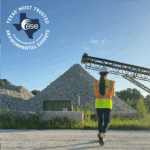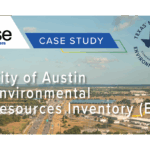
In the realm of environmental management and land development, Phase 2 Environmental Site Assessments (ESA) play a pivotal role. These assessments offer a comprehensive understanding of potential environmental hazards associated with a particular site. Focusing specifically on the Wichita Falls area, this article analyzes the significance of Phase 2 ESAs, the essential components involved, the assessment process itself, findings from the Wichita Falls assessment, recommendations for remediation strategies, and the importance of regulatory compliance and legal implications.
Understanding the Purpose of Phase 2 Environmental Site Assessment
Before delving into the details of Phase 2 ESAs, it is crucial to comprehend the significance of these assessments. In essence, Phase 2 ESAs aim to evaluate the potential environmental risks associated with a specific site, particularly in relation to soil and groundwater contamination. These assessments provide vital information that aids in making informed decisions regarding land development, real estate transactions, and overall environmental management.
The Importance of Environmental Site Assessments
Environmental site assessments, such as Phase 2 ESAs, are essential for numerous reasons. Firstly, they help identify potential contaminants that may pose health risks to humans or harm the ecosystem. For example, a Phase 2 ESA may reveal the presence of hazardous substances like heavy metals or petroleum hydrocarbons, which can have detrimental effects on both human health and the environment.
Secondly, these assessments ensure compliance with environmental laws and regulations and help mitigate legal consequences that may arise from non-compliance. By conducting a Phase 2 ESA, property owners and developers can demonstrate their commitment to environmental responsibility and avoid potential fines or legal disputes.
Lastly, Phase 2 ESAs enable effective remediation planning and long-term monitoring, ensuring the sustainable development of land. Once potential contaminants are identified, environmental professionals can develop appropriate strategies to mitigate the risks and restore the site to a safe and environmentally sound condition. This may involve implementing remediation techniques such as soil excavation, groundwater treatment, or the installation of containment systems.
Key Components of Phase 2 Assessments
A Phase 2 ESA consists of several crucial components that collectively provide a comprehensive understanding of potential environmental hazards. These components include a detailed site inspection, soil and groundwater sampling, laboratory analysis, and data interpretation.
During the site inspection, environmental professionals carefully examine the property, looking for signs of potential contamination sources such as underground storage tanks, chemical spills, or industrial waste disposal areas. This thorough examination helps identify areas of concern that require further investigation.
Soil and groundwater sampling is a critical step in Phase 2 assessments as it allows for the collection of physical samples that can be analyzed in a laboratory. These samples provide valuable information about the presence and concentration of contaminants, helping to determine the extent and severity of contamination.
Once the samples are collected, they undergo laboratory analysis, where specialized techniques are used to identify and quantify the contaminants present. The data obtained from the analysis is then interpreted by environmental professionals, who assess the potential risks associated with the contamination and develop appropriate remediation strategies.
By evaluating these key components, environmental professionals can assess the extent and severity of contamination, identify potential risks, and determine appropriate remediation strategies. This comprehensive approach ensures that Phase 2 ESAs provide accurate and reliable information to support informed decision-making and promote sustainable environmental management.
The Process of Phase 2 Environmental Site Assessment in Wichita Falls
Conducting a Phase 2 ESA in Wichita Falls involves a systematic process that ensures accurate evaluation and analysis. This process typically comprises an initial site inspection and sampling, followed by laboratory analysis and data interpretation.
Initial Site Inspection and Sampling
The initial site inspection involves a thorough examination of the property, including above-ground and subsurface features. Environmental experts assess the presence of potential contaminants, such as chemical spills, storage tanks, or waste disposal areas. Additionally, soil and groundwater samples are collected strategically to target areas of concern.
Laboratory Analysis and Data Interpretation
Once the samples are collected, they are sent to accredited laboratories for analysis. Laboratory procedures include a range of tests to determine the presence and concentration of contaminants. These test results are then meticulously interpreted by environmental professionals, who analyze the data to identify potential risks and evaluate the extent of contamination.
Findings from the Wichita Falls Phase 2 Assessment
The findings from the Phase 2 ESA conducted in Wichita Falls revealed valuable insights into the environmental conditions of the assessed site.
Soil and Groundwater Contamination Results
The analysis of soil and groundwater samples indicated the presence of various contaminants, including heavy metals, petroleum hydrocarbons, and volatile organic compounds (VOCs). The concentrations of these contaminants were higher than the prescribed regulatory limits, suggesting potential adverse effects on human health and the surrounding environment.
Potential Environmental Risks Identified
Based on the assessment findings, several potential environmental risks were identified. These risks included the potential for contaminant migration into adjacent properties, adverse impacts on local water resources, and potential harm to ecological systems in the area. Understanding these risks is crucial for effective remediation planning and long-term monitoring.
Recommendations and Remediation Strategies
Based on the findings from the Phase 2 ESA in Wichita Falls, recommendations for remediation strategies were proposed to address the identified environmental risks.
Proposed Remediation Methods
The proposed remediation methods include a combination of physical, chemical, and biological approaches. These methods aim to remove or treat contaminants effectively, thereby reducing their impact on the environment. Excavation and soil vapor extraction, in situ chemical oxidation, and monitored natural attenuation are among the proposed methods tailored to the specific site conditions.
Long-term Monitoring and Management Plans
Alongside the proposed remediation methods, long-term monitoring and management plans were developed to ensure the effectiveness and sustainability of the implemented strategies. These plans involve regular sampling and analysis of soil and groundwater, as well as continuous environmental monitoring to assess the site’s recovery progress and identify any potential risks that may arise in the future.
Regulatory Compliance and Legal Implications
Compliance with environmental laws and regulations is of utmost importance in any Phase 2 ESA, including those conducted in Wichita Falls.
Compliance with Environmental Laws and Regulations
Environmental professionals conducting Phase 2 ESA in Wichita Falls adhere to federal, state, and local regulations pertaining to environmental management. These regulations ensure the protection of human health and the environment, and compliance is essential to avoid legal consequences.
Potential Legal Consequences of Non-compliance
Failure to comply with environmental laws and regulations may result in severe legal consequences, including fines, penalties, and legal disputes. Non-compliance can also lead to delays or denials of permits for development projects, undermining the progress of land development initiatives.
Conclusion
In conclusion, Phase 2 Environmental Site Assessments play a crucial role in evaluating potential environmental hazards associated with specific sites. The assessment process involves thorough site inspections, sampling, laboratory analysis, and data interpretation. The Phase 2 ESA conducted in Wichita Falls unveiled significant soil and groundwater contamination, highlighting potential risks and necessitating appropriate remediation strategies. Compliance with environmental laws and regulations is vital to avoid legal consequences that may hinder land development initiatives. By undertaking Phase 2 ESAs and adhering to regulatory requirements, responsible organizations and individuals can ensure the sustainable development of land while mitigating environmental risks.
If you’re facing environmental challenges similar to those uncovered in the Wichita Falls Phase 2 Environmental Site Assessment, ESE Partners is here to guide you through the complexities of environmental compliance and remediation. As experts in environmental science and engineering, we are dedicated to responsibly moving business forward with innovative solutions. Whether you need assistance with due diligence for a real estate transaction, navigating new USACE permit application processes, or seeking comprehensive water compliance services, our team is equipped to support your projects across Texas. Don’t let environmental concerns stall your progress. Request A Proposal today and partner with ESE Partners for responsible and efficient environmental problem-solving.








